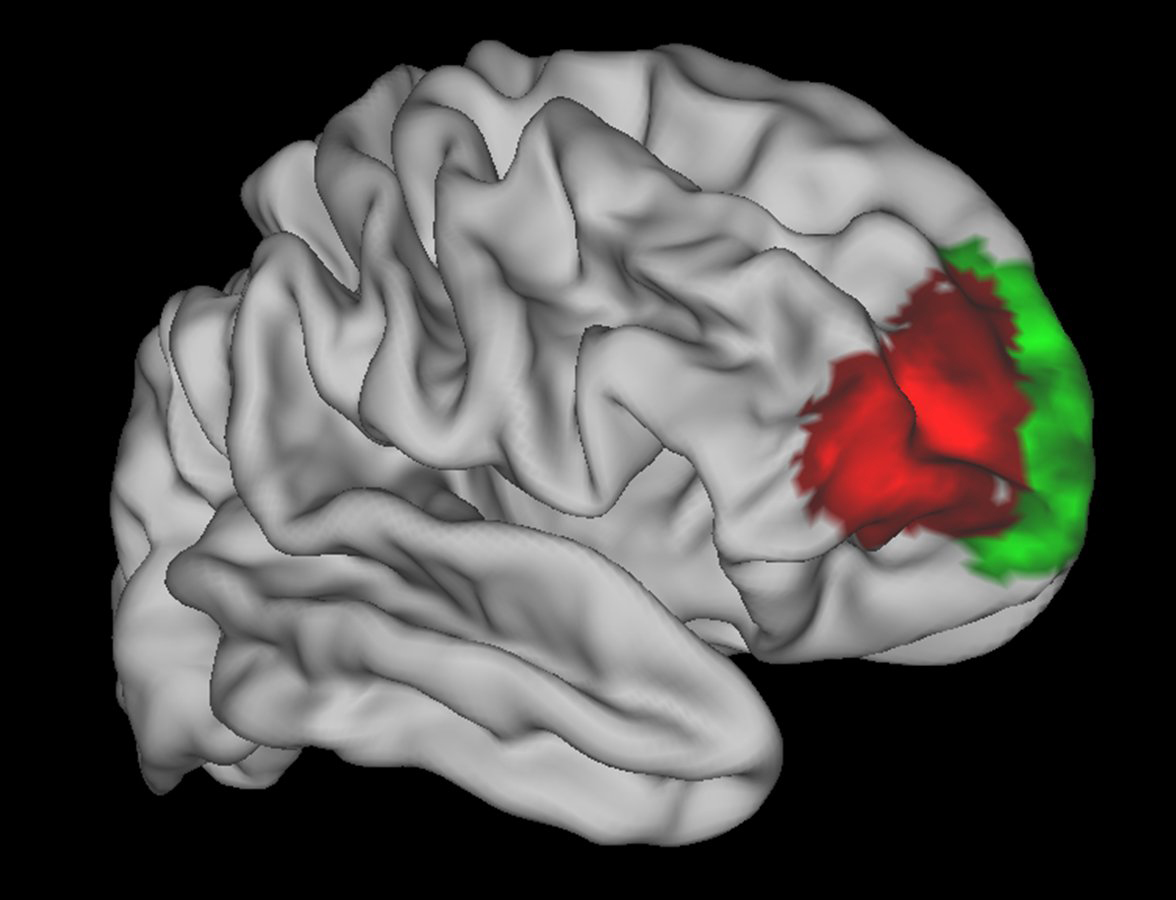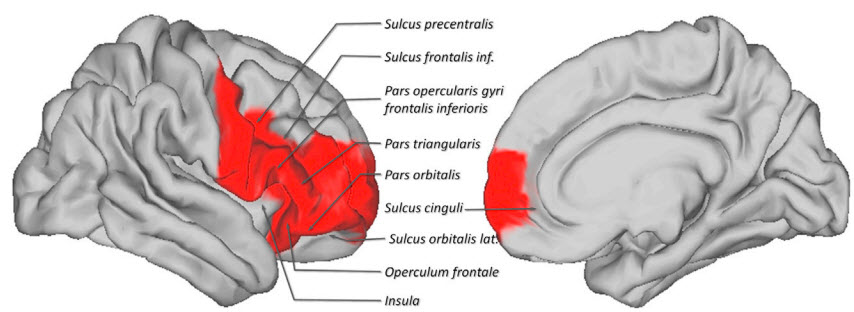A brain area unique to humans is linked to strategic planning/decision making/multitasking
January 30, 2014

Image shows in red an area of the frontal cortex of the brain that appears to be uniquely human (credit: Oxford University)
Oxford University researchers have identified a specific area of the human brain that appears to be unlike anything in the brains of some of our closest relatives.
MRI imaging of 25 adult volunteers was used to identify key components in the area of the human brain called the ventrolateral frontal cortex, and how these components were connected up with other brain areas. The results were then compared with equivalent MRI data from 25 macaque monkeys.
The ventrolateral frontal cortex area of the brain is involved in many of the highest aspects of cognition and language, and is only present in humans and other primates.
Some parts are implicated in psychiatric conditions like ADHD, drug addiction or compulsive behavior disorders. Language is also affected when other parts are damaged after stroke or neurodegenerative disease.
The Lateral frontal pole prefrontal cortex
From the MRI data, the researchers were able to divide the human ventrolateral frontal cortex into 12 areas that were consistent across all the individuals.
“Each of these 12 areas has its own pattern of connections with the rest of the brain, a sort of ‘neural fingerprint,’ telling us it is doing something unique,” said senior researcher Professor Matthew Rushworth of Oxford University‘s Department of Experimental Psychology.
The researchers were then able to compare the 12 areas in the human brain region with the organization of the monkey prefrontal cortex. Overall, they were very similar, with 11 of the 12 areas being found in both species and being connected up to other brain areas in very similar ways.
However, one area of the human ventrolateral frontal cortex had no equivalent in the macaque — an area called the “lateral frontal pole prefrontal cortex” that has been identified with strategic planning and decision making as well as multitasking.
The Oxford University researchers report their findings in the science journal Neuron. They were funded by the UK Medical Research Council.
